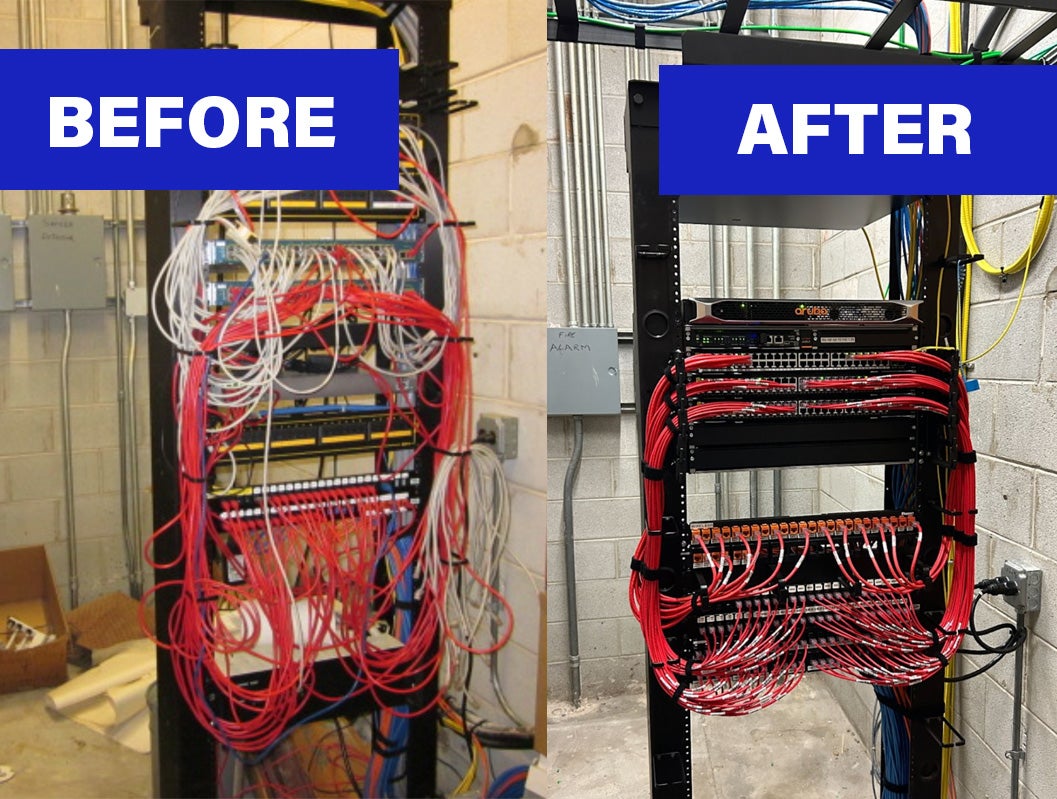Technology Solutions Upgrades Library of Health Sciences Network to Improve Wired and Wireless Connectivity

Introduction
Do you ever wonder how the wireless internet system works? At universities, where thousands of students, faculty, and staff rely on seamless connectivity for education and research, the intricacies behind this technology are both fascinating and essential.
The backbone of this system comprises a network of strategically placed access points, robust network switching, and sophisticated software that manages traffic, ensuring reliable and high-speed internet access across sprawling campuses. This infrastructure supports a myriad of devices and applications, enabling everything from online lectures to collaborative projects, all while maintaining security and efficiency.
To boost and support UIC’s network capability, as part of the Forward Initiative, the Technology Solutions Networks team worked on an ambitious project to upgrade and expand the network at the Library of Health Sciences. The team dedicated approximately 900 hours over a span of two fiscal years on this upgrade.
Text 2

The work included eradicating all legacy connectivity and upgrading all connections to gig connectivity, increasing wireless coverage by 80% to a total of 77 wireless units from 43 and expanding the building network backbone , where each floor connects to the network at 10 gig. Part of the project also included addressing power and grounding deficiency.
“We took a holistic assessment of the building infrastructure while taking a ‘wireless first’ approach to improvements,” said Network Infrastructure Foreman, Tom Wiese.
Quote 1
Many staff machines were connected at 1990’s speeds unfortunately. After the upgrade, the only limit is the age of the device they bring to plug into our network. Libraries provide an important hub for research and also a study space. Having a new, robust, high bandwidth wireless system in place will deliver the needs for users for many years to come.
| Network Infrastructure Foreman
Text 3
The project’s greatest challenge was dealing with the building construction, as much of the work areas were fed with a floor duct system covered with carpet tiles, and were full of debris from many years of use.
“Unfortunately, this floor system, although usable for our data upgrades, was not usable for our wireless improvements,” Wiese said. “To perform our wireless upgrades, we had to use the ceiling which created its own set of barriers… our electricians had to take panels apart just to perform our work, then put the ceilings all back together.”